Benefits of Esports and Tips for Designing a Gaming Space
Esports is [1]growing exponentially and there is a massive growth in building gaming and esports spaces at K-12 schools and in higher education. Here are some of the benefits of gaming and esports in schools plus some great tips for designing gaming & esports spaces.
Benefits of esports at schools and universities
There have been many studies that suggest that playing video games can develop various skills in students. Some of the skills that have been linked to gaming include:
Cognitive skills: Studies have shown that playing video games can improve attention, perception, and reaction time, as well as enhance decision-making, spatial awareness, and problem-solving skills.
Hand-eye coordination: Many video games require quick reflexes and precise movements, which can help improve hand-eye coordination and fine motor skills.
Multitasking: Many video games require players to manage multiple tasks at once, such as controlling their character, keeping track of their surroundings, and communicating with other players. This can help players develop multitasking skills that can be useful in other areas of life.
Creativity: Some video games encourage players to think creatively, whether it’s building structures in Minecraft or coming up with clever solutions to puzzles. This can help players develop their creative problem-solving skills.
Social skills: Multiplayer video games can provide opportunities for players to interact with others and develop social skills, such as cooperation, communication, and negotiation.
Case study
A recent study[2] has found a potential cognitive benefit of video gaming in children. The study, conducted by the University of Vermont and published in JAMA Network Open, analyzed data from nearly 2,000 participants from the ongoing Adolescent Brain Cognitive Development (ABCD) Study. The children were separated into two groups, those who reported playing no video games and those who reported playing video games for three hours per day or more. The researchers found that children who reported playing video games for at least three hours per day performed better on cognitive tasks involving impulse control and working memory and showed higher brain activity in regions of the brain associated with attention and memory. While the study does not prove a causal relationship, it does suggest that playing video games may be associated with better cognitive performance in children.
Tips for designing gaming & esports spaces at schools and universities
Designing inspiring esports and gaming spaces, require us to understand the needs of gamers and e-athletes.
We can go deep into motivational models and purpose driven esports activities, but in this piece, we will provide you with the basics and most effective tips.
Collaborative Zones
Esports is designed to be very social and gamers love to play on a team or with others. The esports collaborative space should support players sitting next to each other with eye contact, sharing high fives and fist bumps and small talks.
Some gamers are loud, some like to talk, some like to work together when playing. Design your gaming space to encourage chatter and collaborative noise as students are building camaraderie and community. Even consider noise absorption desk panels, flooring types, wall panels or ceiling baffles to absorb sound.
Focus Zones
Some gamers are silent, they need to feel safe, concentrated, focused and to immerse themselves in games or homework. Provide spaces to be able to focus and find solitude if necessary. This area may also serve as a great space for teammates to plan and strategize and review previous game stats.
[1] https://streampunkt.com/news/the-rise-of-collegiate-esports/
[2] https://www.nih.gov/news-events/news-releases/video-gaming-may-be-associated-better-cognitive-performance-children
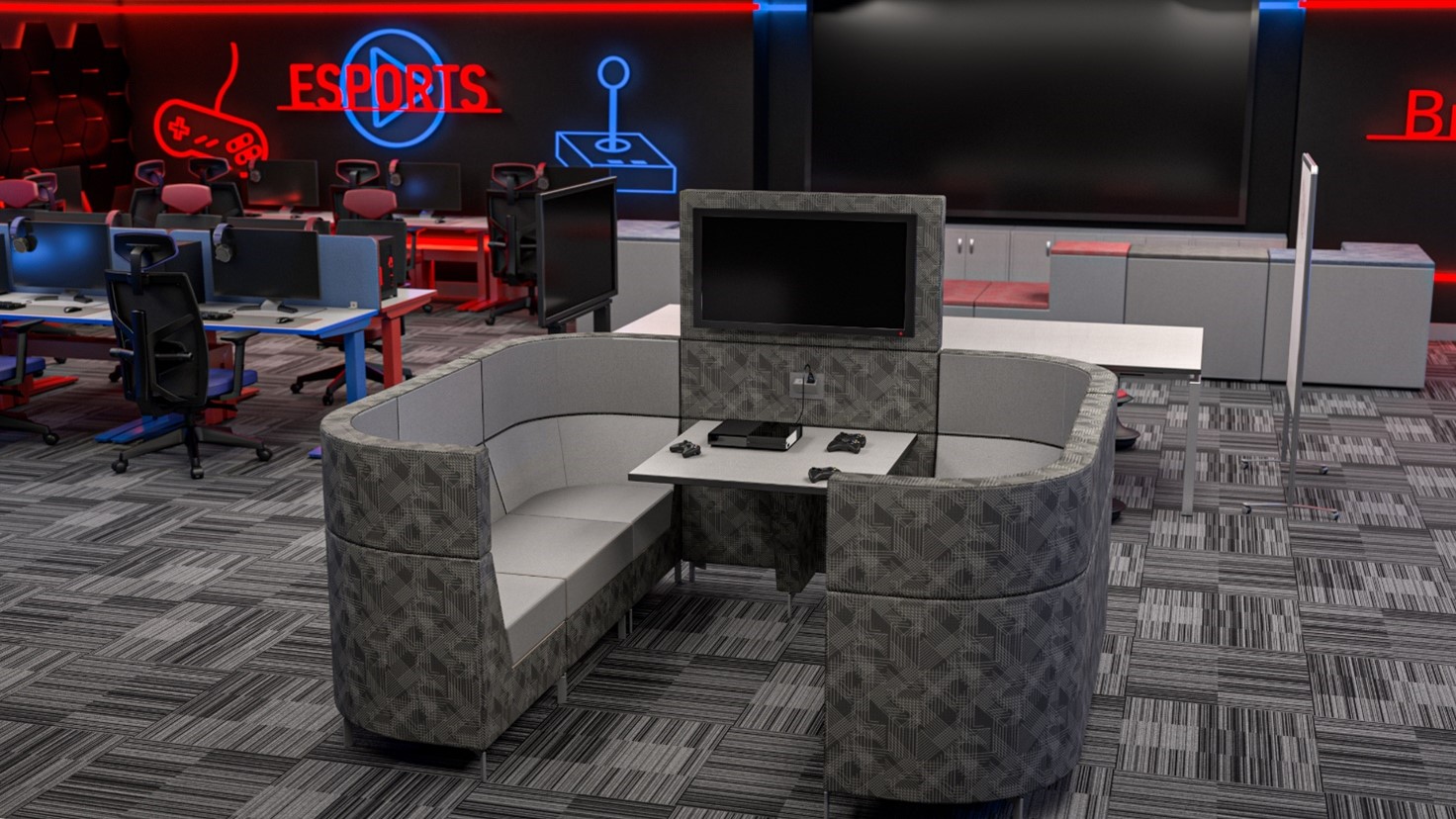
Relaxing and social areas
Some gamers are motivated by being social and gaming with others. If your esports spaces offer relaxing and social areas where students can hang out, talk, have fun and make new friends, this will support the growth of the program.
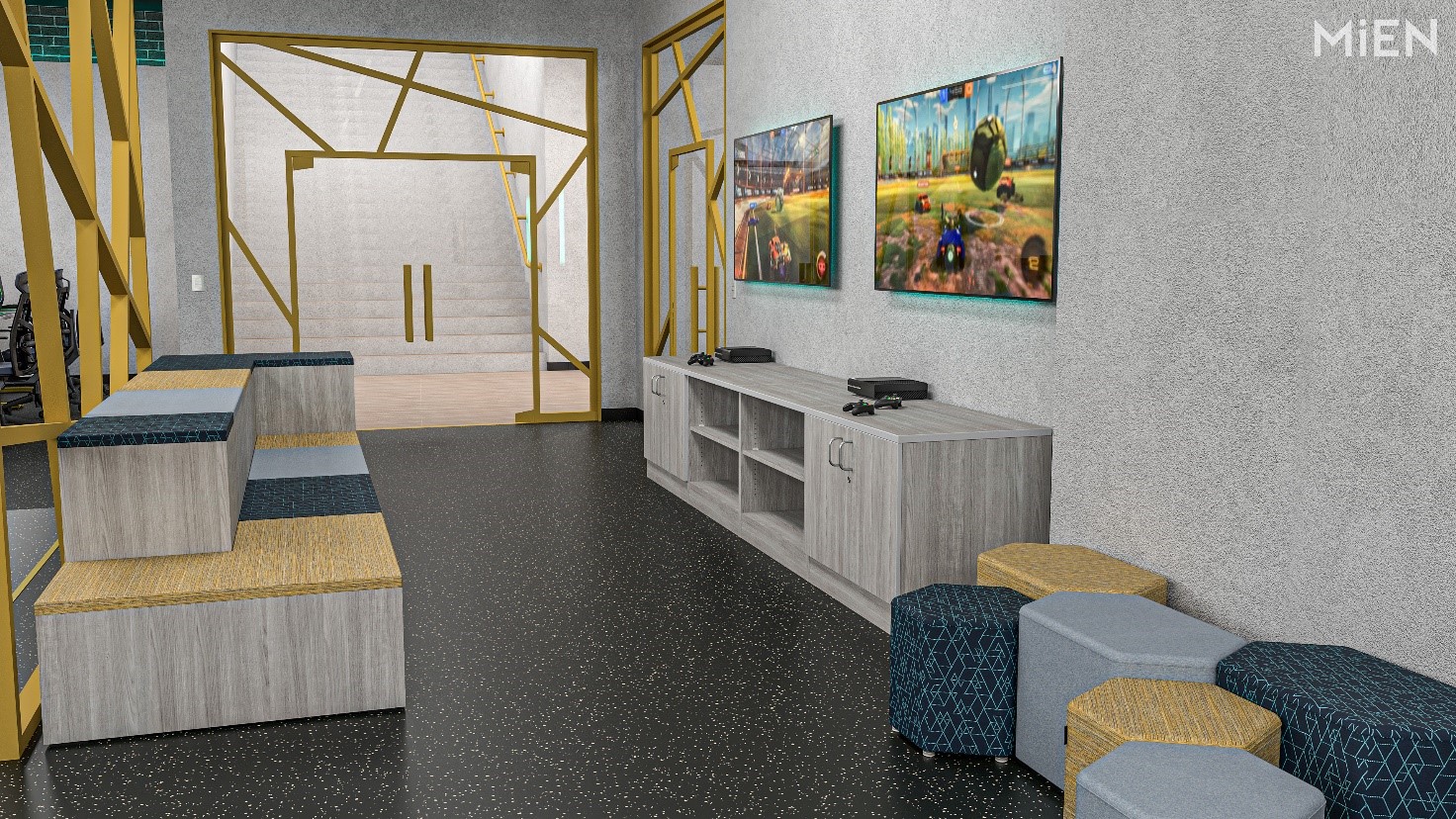
Spectator Zone
Having a viewing area with chairs, sofas, and big screen / projector, allows fans, students and visitors to watch and view the school teams when they are playing in tournaments and leagues. Viewing areas can also be used for instructions, teaching, ted-talks, motivational speaks and watching matches in general. Tiered seating is a great design consideration for this zone. This is also a great area to include a media sharing wall for smaller groups to spectate.
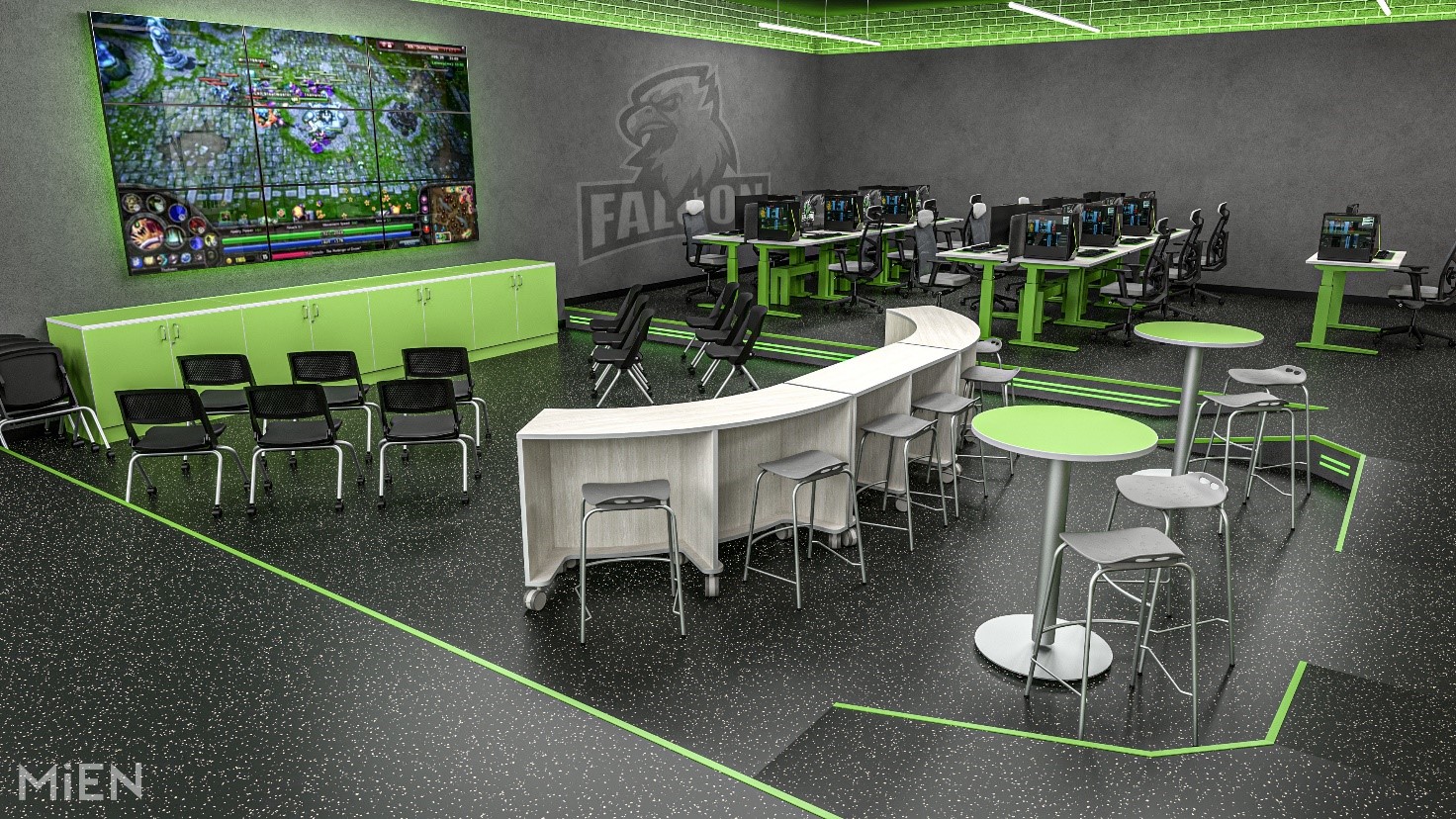
Conference Zone
Meeting area, conference space, tactical space – some teams, gamers, classes, need a conference area with white boards and smart screens, so they can prepare a match, analyze a competitor, have team meetings, build new projects.
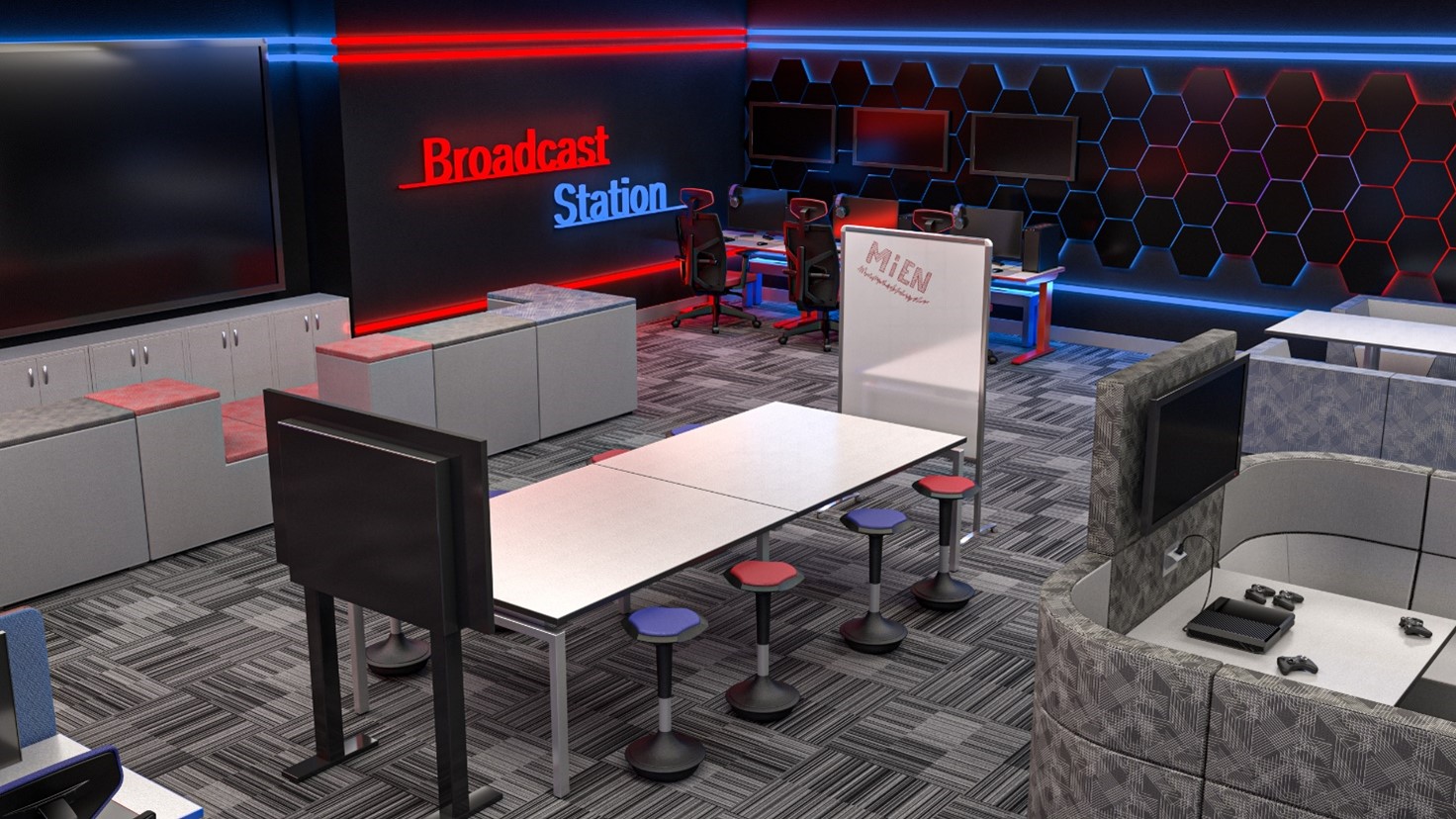
Shoutcasting Zone
The Shoutcasting area has desks with computers where streamers, hosts and casters, can stream, cast, host and commentate esports activities. Usually this is a silent area, because the caster is broadcasting his / her voice and the comments of the game, via online streams to platforms like Twitch. Some are very active and social, specially if they have on-location viewers they need to entertain.
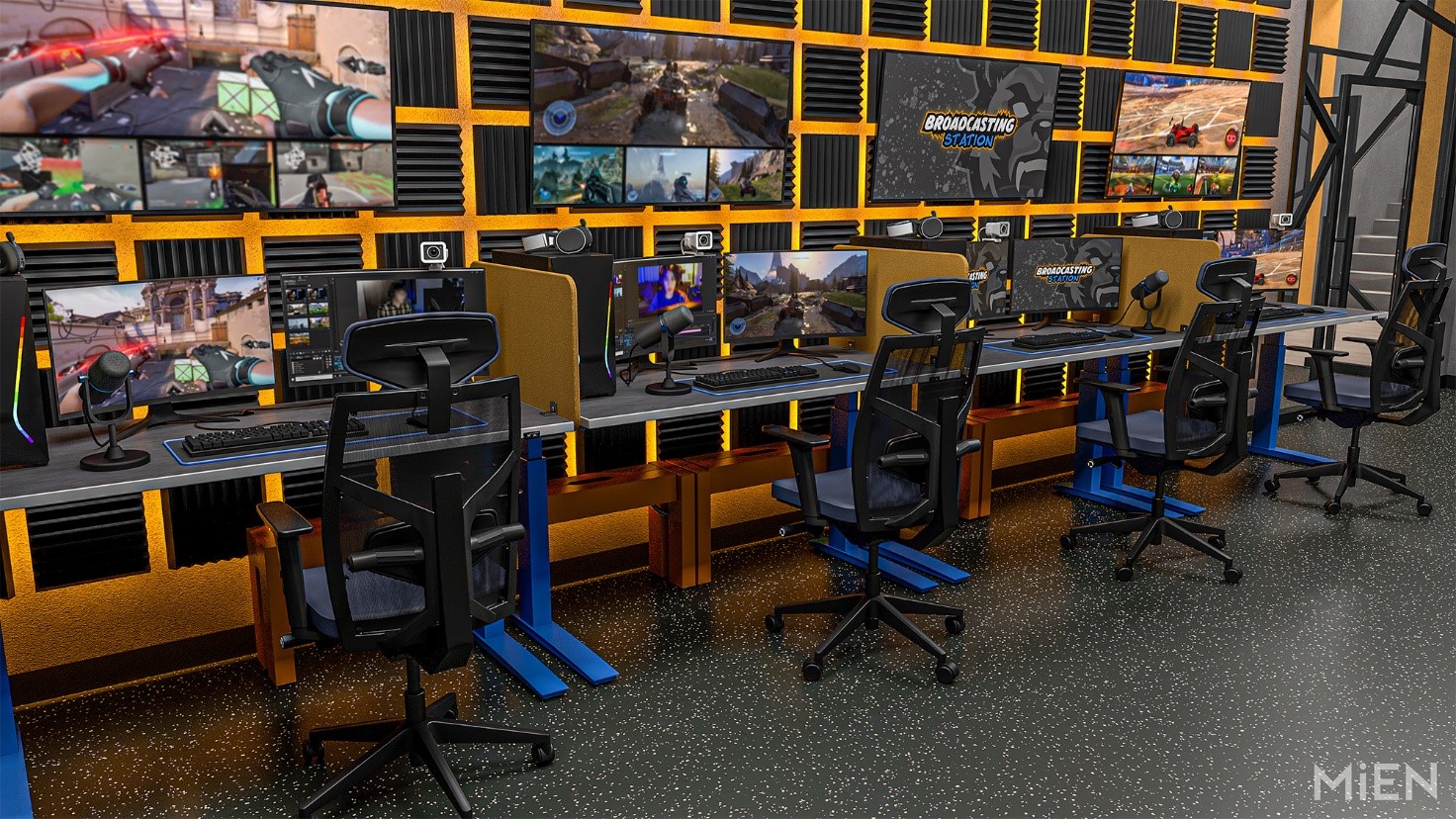
Want to learn more about esports? Download this esports whitepaper from MiEN Environments for all the research and insights into gaming!


